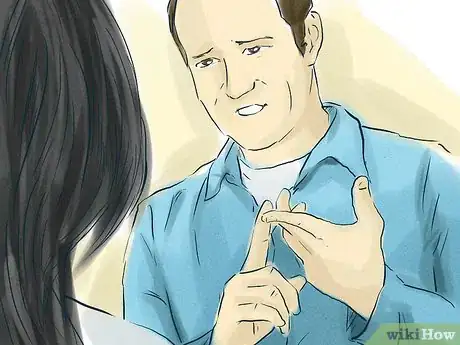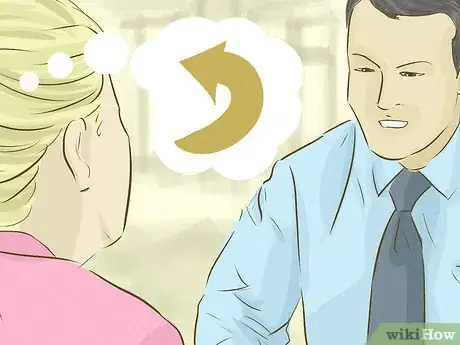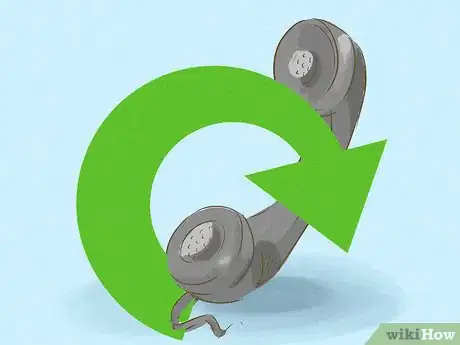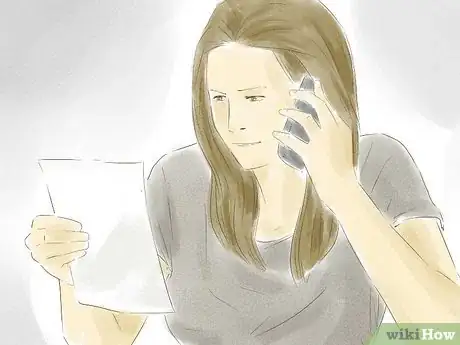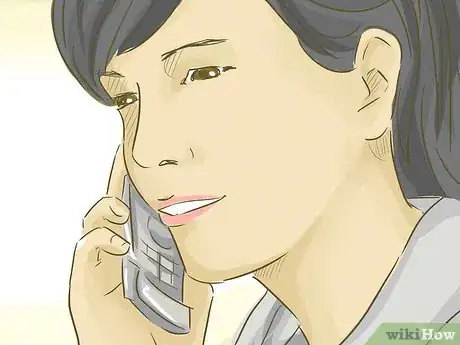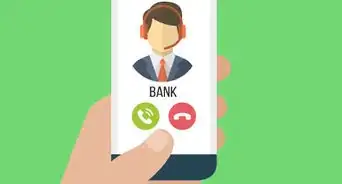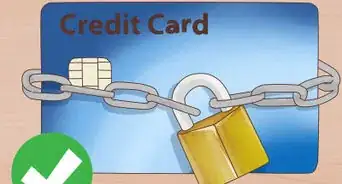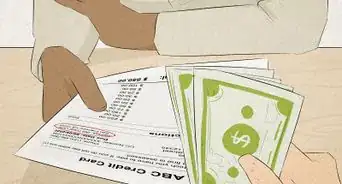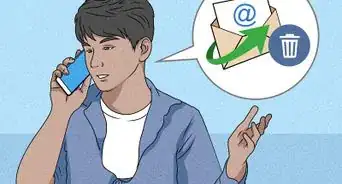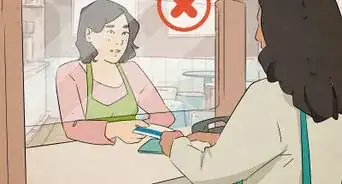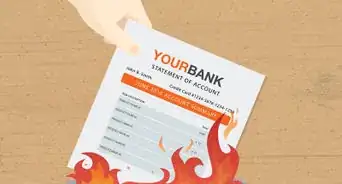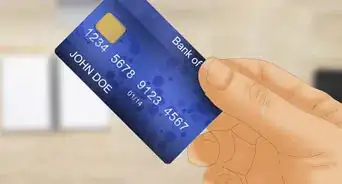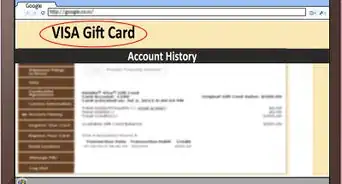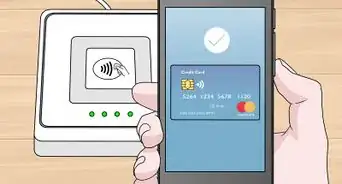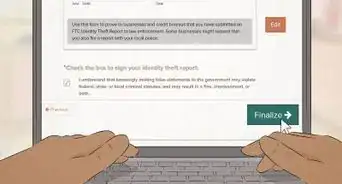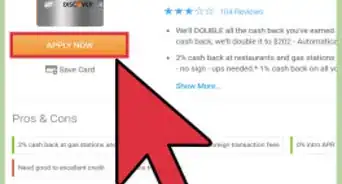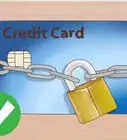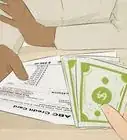This article was co-authored by Michael R. Lewis. Michael R. Lewis is a retired corporate executive, entrepreneur, and investment advisor in Texas. He has over 40 years of experience in business and finance, including as a Vice President for Blue Cross Blue Shield of Texas. He has a BBA in Industrial Management from the University of Texas at Austin.
This article has been viewed 474,038 times.
Stopping a credit card payment may be necessary for several reasons. At times, a pre-arranged payment must be delayed when a paycheck does not arrive on time, or some sudden financial emergency means delaying that payment for a short period of time. Other times, a purchase may have been made for a damaged or defective product, and you may want to withhold or reverse the payment. Fortunately, there are a couple of different ways to go about stopping the credit card payment from being processed, provided that the card provider is notified within a reasonable period of time.
Steps
Withholding or Reversing a Payment After It Has Been Made
-
1Understand your rights. If a payment has already been made to a vendor, there are certain circumstances in which you can withhold or even reverse a payment on a credit card. These rights are granted to you under the Fair Credit Billing Act (FCBA). [1]
- Under the FCBA, if you make a purchase over $50, and the merchant is in your state, or, within 100 miles (160 km) you may withhold a purchase under various circumstances.
- These circumstances include: If you order a goods and they show up damaged or defective (and the seller will not take it back or replace it), if you order goods and they do not appear within 30 days (and the seller is not dealing with it), if a package you did not order appears from a merchant which has your credit card information, or if you made a purchase from a merchant that went out of business.
-
2Attempt to resolve the dispute with the seller. While the FCBA does indicate you have the right to withhold payment in the above situations, it also states you can only do so if you made a good-faith effort to correct the issue directly with the merchant.
- What constitutes a good-faith effort? Firstly, attempt to contact the seller via phone. If they do not answer, or if they refuse to refund payment or refund or resolve the issue, this would constitute a good faith effort.
- Keep records of your phone calls including name of person talked to, date, time of call, and outcome.
- Follow up any phone call with a letter. Explain in detail the situation, the product, and your rights as previously mentioned under the FCBA. Mail the letter to the seller (or hand deliver it if possible), and retain a copy for yourself.
Advertisement -
3Ensure you do not pay the disputed amount. To withhold a payment is to not pay the amount in dispute. If you go ahead and pay the amount in dispute, this could complicate the situation, and at this point you would be looking to reverse a payment, which will be discussed in the following steps.
- Be sure to pay any other charges to your account that are not related to the disputed amount. This could include other charges to your card or fees.
-
4Contact the issuer of your credit card. If working out the situation with the merchant directly fails, it is essential to contact your credit card issuer to inform them of the matter and express your desire to withhold payment. [2]
- Write the issuer of your credit. In your letter make sure to state your name, the card number, the name of the seller as it appears on the credit card statement, the date of purchase, the amount paid, and an explanation of your reason for withholding the purchase.
- It is possible to conduct this by telephone. If you do so, make sure to follow up with a letter. As well, send a copy of this letter to the merchant to ensure they are aware that you have contacted the credit card company about the matter. Make sure to retain a copy of the letter.
- Act as promptly as possible. The Fair Credit Card Billing act states that you have 60 days to take action after you received the bill for the disputed amount. The quicker you act the better your odds of success.[3]
-
5Wait for a decision by your credit card company. The credit card company will analyze the required information and make a decision as to side either with your, or with the merchant. Often, because credit card companies want to retain customers, they will issue a temporary credit to your account in the amount of the disputed purchase. [4]
- The company will then contact the merchant. After consulting with the merchant, if the credit card company agrees that you are in the right, they will either maintain the credit they already issued you, or issue one of they have no already. If they side with the merchant, you will be required to make the payment on your card.
-
6Understand the limitations. The above steps should be sufficient to allow to withhold payment on your card. There are however some limitations in which you will not be able to withhold.
- You can only withhold payments for consumer transactions. That is to say, if you are using your card to make a personal, family, or household purchase. If the card is used for business purposes, these benefits do not apply.
- You can only withhold payments if you used your credit card as a credit card. What this means is that if no credit was extended (like if you use overdraft or cash advance feature), you will not be able to withhold payments.
- You can only withhold payment if it is over $50 or if the sale took place in your home state or within 100 miles (160 km) of your home address.
- You can only withhold payment on the balance of the purchase that is unpaid. That is to say, the remaining unpaid balance of the purchase on the day that you initially notified the seller is the only amount you can withhold payment on.
-
7Reverse a payment that was already made. If you've already paid your credit card bill and are later unhappy with your purchase, you can request a payment be reversed or refunded. The steps to do so follow the exact steps as withholding a payment.[5]
- Contact the seller first and request a refund. If unsuccessful, follow through with your credit card issuer as described above. If the credit card company deems your complaint to be valid, they will permit the reversal and issue a refund to your account.
-
8Apply these same steps to any other form of disputed payment. For example, if you notice a charge on your card from a merchant that previously had your card information, or if you notice any other mysterious transactions on your card.
- In cases of fraudulent payments (like if you notice a transaction you simply never made, or from a merchant you have no prior relationship) simply contact your credit card company and they will quickly resolve your dilemma.
Stopping a Pre-Arranged Payment Before It Happens
-
1Identify the credit card payment that you need canceled or stopped. If you have an automatic payment option established with your account, accessing the account online will typically allow the cardholder to view the list of pending payments along with the scheduled dates. A quick review of the upcoming payments will make it easy to see if one or more need to be stopped and rescheduled for a later date.
-
2Check any restrictions that may apply to stopping credit card payments. Many providers allow a time frame in which pending payments may be canceled, changed or rescheduled. Make sure to initiate the change within the required period in order to prevent possible rejections by your bank, a situation that would result in the assessment of late charges and other fees and penalties.
-
3Notify the credit card provider of the need to stop the pending credit card payment. Stopping a scheduled credit card payment requires nothing more than telephoning the provider, identifying the upcoming payment date and canceling that pending payment. Be prepared to provide information that confirms your identity and serves as authorization to make the changes. Alternatively, log into the account using your account credentials, access the pending payments and cancel the payment or payments that need to be delayed.
- Keep a record of who you talked to, date, time, and outcome of call. Follow up with letter confirming conversation.
-
4Verify that the credit card payment has been canceled. Confirmation of the changes to your payment schedule are usually provided instantly in an online environment or follow shortly thereafter in the form of an official email confirmation. If the changes are made by phone, the customer service representative will confirm that the changes are complete before ending the call, and will typically offer a confirmation number. Write down the number and keep in on file, just in case the changes do not make it all the way through the system for some reason.
-
5Notify the merchant if your payment will be late. If stopping a pre-arranged payment also means that you will be unable to make a payment on time, it is important to call the provider to notify them. This can help to potentially waive any late fees, and could establish good will.
- For example, if you are postponing your monthly cell phone, call the provider and notify them you will be late. They may be able waive or negotiate a one-time reduction or elimination in your late fee.
Expert Q&A
Did you know you can get expert answers for this article?
Unlock expert answers by supporting wikiHow
-
QuestionI have paid for a year with my credit card for unlimited downloads from Slideteam.net. After some days they put a security code in each slide in order to make it more difficult for me. How can I cancel my subscription and get my money back?
 Michael R. LewisMichael R. Lewis is a retired corporate executive, entrepreneur, and investment advisor in Texas. He has over 40 years of experience in business and finance, including as a Vice President for Blue Cross Blue Shield of Texas. He has a BBA in Industrial Management from the University of Texas at Austin.
Michael R. LewisMichael R. Lewis is a retired corporate executive, entrepreneur, and investment advisor in Texas. He has over 40 years of experience in business and finance, including as a Vice President for Blue Cross Blue Shield of Texas. He has a BBA in Industrial Management from the University of Texas at Austin.
Business Advisor Follow Method 2 in the case of recurring payments to the vendor. Most credit card companies will allow card holders to stop payment for damaged or low-quality products or service. Under the Fair Credit billing Act, you have a responsibility to try and resolve the issue with the vendor before canceling the transaction
Follow Method 2 in the case of recurring payments to the vendor. Most credit card companies will allow card holders to stop payment for damaged or low-quality products or service. Under the Fair Credit billing Act, you have a responsibility to try and resolve the issue with the vendor before canceling the transaction -
QuestionI want to cancel my credit card. Will they waive my annual fee and refund my money?
 Michael R. LewisMichael R. Lewis is a retired corporate executive, entrepreneur, and investment advisor in Texas. He has over 40 years of experience in business and finance, including as a Vice President for Blue Cross Blue Shield of Texas. He has a BBA in Industrial Management from the University of Texas at Austin.
Michael R. LewisMichael R. Lewis is a retired corporate executive, entrepreneur, and investment advisor in Texas. He has over 40 years of experience in business and finance, including as a Vice President for Blue Cross Blue Shield of Texas. He has a BBA in Industrial Management from the University of Texas at Austin.
Business Advisor
-
QuestionI accidentally paid for something with my credit card. How can I cancel the payment?
 Michael R. LewisMichael R. Lewis is a retired corporate executive, entrepreneur, and investment advisor in Texas. He has over 40 years of experience in business and finance, including as a Vice President for Blue Cross Blue Shield of Texas. He has a BBA in Industrial Management from the University of Texas at Austin.
Michael R. LewisMichael R. Lewis is a retired corporate executive, entrepreneur, and investment advisor in Texas. He has over 40 years of experience in business and finance, including as a Vice President for Blue Cross Blue Shield of Texas. He has a BBA in Industrial Management from the University of Texas at Austin.
Business Advisor
References
- ↑ https://www.fdic.gov/consumers/consumer/news/cnwin1213/stoppayment.html
- ↑ https://www.fdic.gov/consumers/consumer/news/cnwin1213/stoppayment.html
- ↑ http://www.investopedia.com/articles/pf/07/credit-card-dispute.asp
- ↑ http://www.bankrate.com/finance/credit-cards/how-to-dispute-a-credit-card-purchase-1.aspx
- ↑ https://www.fdic.gov/consumers/consumer/news/cnwin1213/stoppayment.html
About This Article
To cancel a credit card payment, start by reaching out to the seller to see if you can work with them to resolve the issue. If the seller is unwilling or unable to cancel the payment, contact your credit card company and explain the situation to them. Then, wait for your credit card company to reach out to the merchant and make a decision. If they side with you, you should receive a credit for the disputed amount in your account. To learn how to cancel a recurring credit card payment, scroll down!





